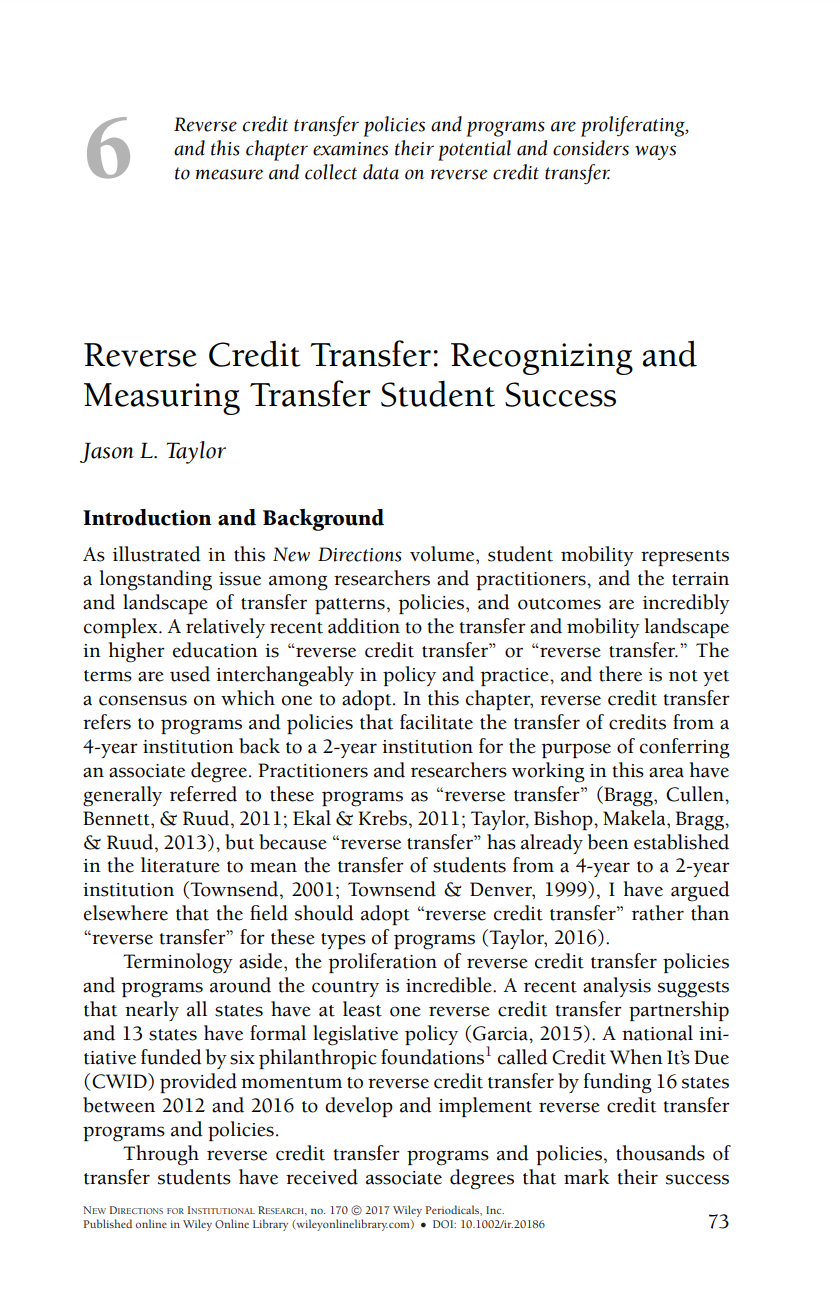Reverse Credit Transfer: Recognizing and Measuring Transfer Student Success
Author(s): Jason L. Taylor
Publisher: New Directions for Institutional Research
Year: 2017
Access Publication*Subscription Required
Description
As illustrated in this New Directions volume, student mobility represents a longstanding issue among researchers and practitioners, and the terrain and landscape of transfer patterns, policies, and outcomes are incredibly complex. A relatively recent addition to the transfer and mobility landscape in higher education is “reverse credit transfer” or “reverse transfer.” The terms are used interchangeably in policy and practice, and there is not yet a consensus on which one to adopt. In this chapter, reverse credit transfer refers to programs and policies that facilitate the transfer of credits from a 4-year institution back to a 2-year institution for the purpose of conferring an associate degree. Practitioners and researchers working in this area have generally referred to these programs as “reverse transfer” (Bragg, Cullen, Bennett,&Ruud, 2011; Ekal&Krebs, 2011; Taylor, Bishop,Makela, Bragg, & Ruud, 2013), but because “reverse transfer” has already been established in the literature to mean the transfer of students from a 4-year to a 2-year institution (Townsend, 2001; Townsend & Denver, 1999), I have argued elsewhere that the field should adopt “reverse credit transfer” rather than “reverse transfer” for these types of programs (Taylor, 2016).

